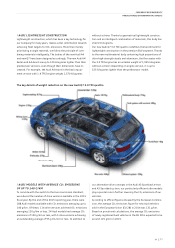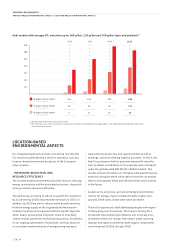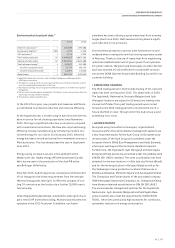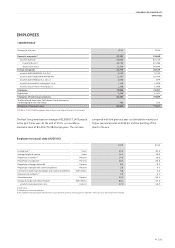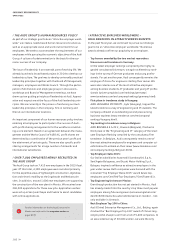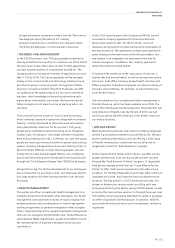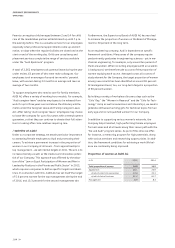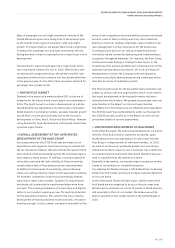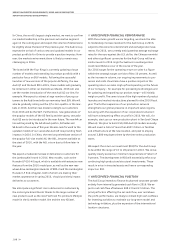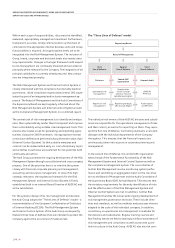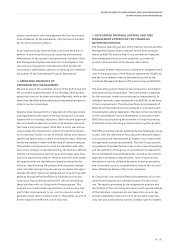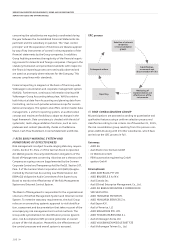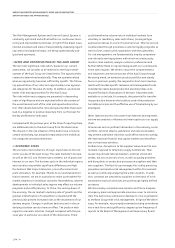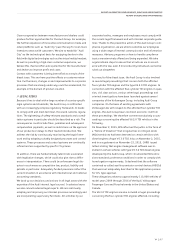Audi 2015 Annual Report Download - page 187
Download and view the complete annual report
Please find page 187 of the 2015 Audi annual report below. You can navigate through the pages in the report by either clicking on the pages listed below, or by using the keyword search tool below to find specific information within the annual report.
REPORT ON EXPECTED DEVELOPMENTS, RISKS AND OPPORTUNITIES
REPORT ON EXPECTED DEVELOPMENTS
>> 187
Sales of passenger cars and light commercial vehicles in the
United States will grow more slowly than in the previous year
as the market shows signs of saturation, with only slight
growth. For South America, we expect there to be a slight drop
in demand for passenger cars and light commercial vehicles.
Falling demand in Brazil is expected to be a major factor in this
development.
The Asia-Pacific region should again be a major driver of the
rise in worldwide demand for cars in 2016. With China’s vehi-
cle density still comparatively low, the growth trend for new
registrations there should continue, but less dynamically than
in the previous year. On the other hand, we expect demand for
passenger cars in Japan to fall.
// MOTORCYCLE MARKET
Demand in the motorcycle markets above 500 cc that are of
relevance for the Ducati brand should again rise moderately in
2016. The slight revival in economic development as a whole
should benefit new registrations of motorcycles in the estab-
lished markets. In emerging markets, we expect weaker growth
overall than in recent years primarily due to the economic
development in China, Brazil, Russia and South Africa. However,
rising demand for high-displacement motorcycles should have
a positive impact there.
/OVERALL ASSESSMENT OF THE ANTICIPATED
DEVELOPMENT OF THE AUDI GROUP
Our assessments for the 2016 fiscal year are based on our
expectations with regard to how the economy as a whole and
the car market will develop. We assume that the upward trend
will continue, while acknowledging that the individual regions
will present a mixed picture. In addition, numerous geopoliti-
cal trouble spots and the high volatility of financial markets
complicate the task of forecasting economic developments.
In addition to these areas of uncertainty, various develop-
ments are making a lasting impact on the automotive industry.
For example, competition is becoming increasingly intense,
especially in major sales markets. Tougher CO2 requirements
worldwide will accelerate the trend toward alternative drive
concepts. The growing prominence of connectivity and digitali-
zation in our society is opening up new, far-reaching potential
for the automotive industry. This calls for the cross-industry
development of existing business models and new, innovative
mobility concepts. In this context, we need to be mindful of the
entry of new competitors into the mobility business and related
services, some of them crossing over from other industries.
Bearing in mind our strategic objectives, value-oriented corpo-
rate management is of key importance for the Audi Group.
To safeguard and build on our strong competitive position
worldwide, we are constantly developing and implementing a
succession of targeted measures. For instance, the Audi Group
continues to invest heavily in strategic future topics, in the
broadening of its product portfolio and in the expansion of the
international manufacturing network. All in all, the Board of
Management considers the Company to be well-placed to
continue successfully addressing upcoming challenges and to
maintain its course of qualitative growth.
The following forecasts for the key performance indicators are
subject to various risks and opportunities which could result in
the actual development in the key performance indicators
deviating from the forecast. We present the principal risks and
opportunities in the Report on risks and opportunities.
The effects from the diesel issue are reflected and presented in
the 2015 Annual Financial Statements under our forecast for
the 2016 fiscal year, as well as in the Report on risks and op-
portunities based on current assessments.
// ANTICIPATED DEVELOPMENT OF DELIVERIES
In the 2015 fiscal year, the Audi Group delivered over 1.8 million
vehicles of the Audi brand to customers worldwide, again
establishing record new registrations for the brand with the
Four Rings in a large number of individual markets. In 2016,
we want to continue our worldwide growth and, assuming a
stable environment, expect to see a moderate rise in deliveries
to customers by the Audi brand. We should therefore also suc-
ceed in outperforming the market as a whole.
Especially in key markets, we are planning to increase our market
shares or consolidate our competitive position.
Our objective for Western Europe in 2016 therefore is to develop
better than the market overall and increase customer deliveries
of our core brand.
In the Central and Eastern Europe region, vehicle sales of the
Audi brand are also expected to be up on the prior-year level.
We also aim to maintain our course of growth in North America,
and especially in the U.S. car market. We believe we will be
able to outperform the market overall in the United States in
2016.


